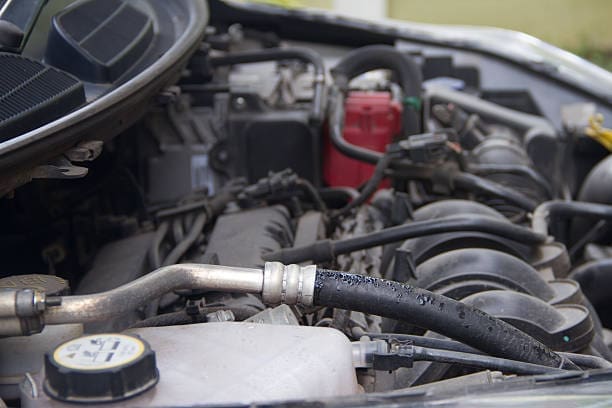High Mileage Engine Care require special attention to maintain performance and longevity. One of the most critical aspects of high-mileage engine care is regular and proper oil changes. This guide provides detailed insights into the best practices, products, and techniques for maintaining your high-mileage engine through effective oil changes.
Understanding High Mileage Engines
Table of Contents
Toggle
What is a High Mileage Engine?
A high-mileage engine is typically considered any engine that has accumulated more than 75,000 miles. These engines often experience more wear and tear, which can lead to decreased performance and efficiency if not properly maintained.
Common Issues in High Mileage Engines
High-mileage engines are more prone to certain issues such as:
- Oil Leaks: Gaskets and seals can wear out, leading to oil leaks.
- Oil Consumption: Older engines may consume more oil.
- Deposits and Sludge: Over time, deposits and sludge can build up, affecting engine performance.
- Decreased Compression: Wear on piston rings and cylinders can lead to decreased compression and power.
Importance of Regular Oil Changes
Benefits of Regular Oil Changes
Regular oil changes are crucial for high-mileage engines for several reasons:
- Lubrication: Fresh oil provides essential lubrication to reduce friction and wear.
- Cooling: Oil helps dissipate heat, preventing overheating.
- Cleaning: Oil changes remove contaminants and sludge.
- Sealing: Quality oil helps maintain seals and gaskets, preventing leaks.
Frequency of Oil Changes
For high-mileage engines, oil changes should typically be more frequent than for newer engines. A general rule of thumb is to change the oil every 3,000 to 5,000 miles, but this can vary based on the type of oil used and driving conditions.
Choosing the Right Oil for High Mileage Engines
Types of Oil
Selecting the right oil is critical for maintaining a high-mileage engine. Here are the main types of oil to consider:
Conventional Oil
Conventional oil is the most basic type, suitable for older vehicles with simpler engine designs. However, it may not provide the best protection for high-mileage engines due to its limited additives.
Synthetic Oil
Synthetic oil offers superior protection and performance. It is designed to withstand extreme temperatures and provides better lubrication and cleaning properties. It’s an excellent choice for high-mileage engines.
High Mileage Oil
High mileage oil is specifically formulated for engines with over 75,000 miles. It contains additives that help reduce oil consumption, minimize leaks, and clean sludge and deposits.
Viscosity Ratings
Viscosity is a measure of an oil’s thickness and its ability to flow at different temperatures. For high-mileage engines, it’s important to choose the correct viscosity rating to ensure optimal performance and protection. Common ratings include:
- 5W-30: Suitable for colder climates and provides good protection at lower temperatures.
- 10W-30: A versatile option that offers good protection across a range of temperatures.
- 10W-40: Thicker oil that can provide better protection for older engines with larger clearances.
Steps for Changing Oil in High Mileage Engines
Gather Necessary Tools and Supplies
Before starting the oil change, make sure you have the following tools and supplies:
- Oil filter wrench
- Socket set and wrench
- Oil drain pan
- Funnel
- Rags or paper towels
- Jack and jack stands or ramps
- New oil and oil filter
Preparation
- Warm Up the Engine: Run the engine for a few minutes to warm up the oil, making it easier to drain.
- Lift the Vehicle: Use a jack and jack stands or ramps to lift the front of the vehicle securely.
Draining the Old Oil
- Locate the Drain Plug: The drain plug is usually located on the bottom of the oil pan.
- Place the Drain Pan: Position the drain pan under the drain plug.
- Remove the Drain Plug: Use a socket wrench to remove the drain plug and allow the old oil to drain completely.
- Replace the Drain Plug: Once the oil has drained, replace the drain plug and tighten it securely.
Replacing the Oil Filter
- Locate the Oil Filter: The oil filter is typically located near the oil pan.
- Remove the Old Filter: Use an oil filter wrench to remove the old filter.
- Prepare the New Filter: Apply a small amount of fresh oil to the gasket of the new filter.
- Install the New Filter: Screw the new filter in place by hand, ensuring it is snug but not overtightened.
Adding New Oil
- Locate the Oil Fill Cap: The oil fill cap is usually on top of the engine.
- Add the New Oil: Use a funnel to add the new oil, checking the owner’s manual for the correct amount and type of oil.
- Check the Oil Level: After adding the oil, use the dipstick to check the oil level. Add more oil if necessary to reach the recommended level.
Finishing Up
- Run the Engine: Start the engine and let it run for a few minutes to circulate the new oil.
- Check for Leaks: Inspect the drain plug and oil filter for any signs of leaks.
- Dispose of Old Oil Properly: Take the old oil to a recycling center or auto parts store for proper disposal.
Additional Maintenance Tips for High Mileage Engines

Regular Inspections
In addition to regular oil changes, perform routine inspections of your high-mileage engine. Check for oil leaks, inspect belts and hoses, and monitor fluid levels.
Use Fuel Additives
Fuel additives can help clean the fuel system and improve engine performance. They can remove deposits and improve fuel economy.
Monitor Engine Performance
Pay attention to any changes in engine performance, such as unusual noises, decreased power, or increased oil consumption. Addressing issues early can prevent more significant problems.
Signs Your High Mileage Engine Needs Attention
Excessive Oil Consumption
If your engine is consuming more oil than usual, it may be a sign of worn piston rings or valve seals. Regularly check and top off the oil level.
Oil Leaks
Oil leaks can indicate worn gaskets or seals. Inspect the engine and address any leaks promptly to prevent damage.
Decreased Performance
A noticeable drop in engine performance could be due to a variety of issues, including clogged fuel injectors, worn spark plugs, or low compression.
Unusual Noises
Knocking, ticking, or other unusual engine noises can indicate internal wear. Investigate and address these noises to prevent further damage.
Conclusion
Proper care of a high-mileage engine is essential for maintaining performance and extending its lifespan. Regular oil changes with the right type of oil, attention to viscosity ratings, and thorough maintenance can keep your engine running smoothly. By following the steps outlined in this guide and addressing any issues promptly, you can ensure your high-mileage vehicle continues to perform well for many miles to come.



